Nvidia GeForce RTX 3090 Vs AMD Radeon RX 6900 XT
Nvidia's BFGPU versus AMD's top performing GPU - which comes out better?
- Last Updated May 13, 2021
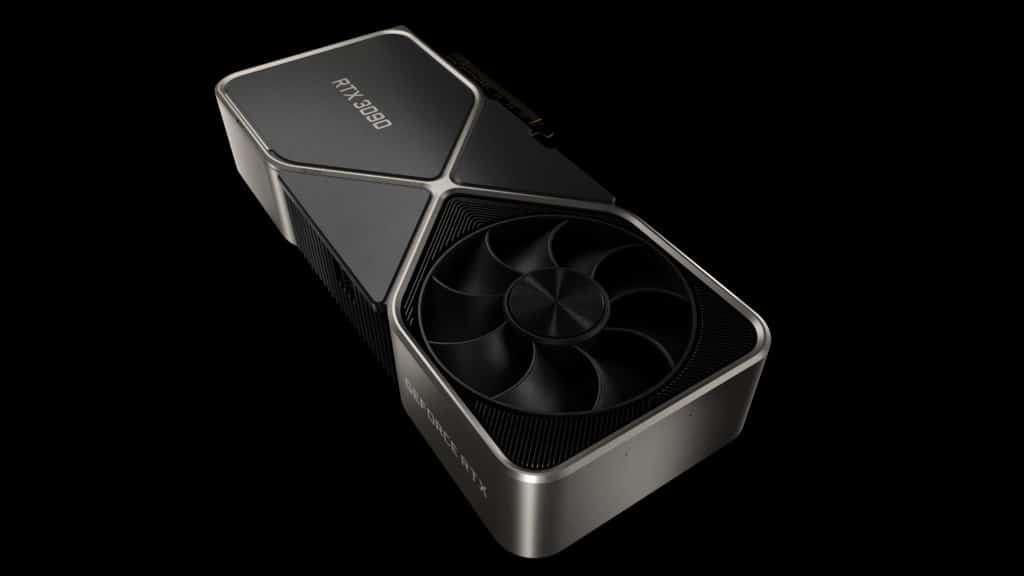
When it comes to choosing a new graphics card for your computer, PC gamers are in a better situation now than they been arguably ever before. Not only do they have the choice between AMD and Nvidia to um and aw over, but the top end GPUs being delivered from these two companies are in fact majorly powerful.
Setting aside the obvious difficulties that have arisen in actually buying these cards (it seems nigh on impossible), let’s talk about which one of these two cards deserves your money more if you are in the market for a serious GPU upgrade. Ready to find out where to put your money? Then here we go: the Nvidia GeForce RTX 3090 Vs. the AMD Radeon RX 6900 XT.
The Specifications Of The RTX 3090 And The RX 6900 XT
| AMD RX 6900 XT | NVIDIA RTX 3090 | |
| Price | $999 | $1499 |
| Interface | PCI Express 4.0 | PCI Express 4.0 |
| Node Size | 7nm | 8nm |
| GPU Cores | 5,120 Stream Processors | 10,496 CUDA Cores |
| Ray Tracing Cores | 80 Ray Accelerators | 82 Gen 2 RT Cores |
| Tensor Cores | N/A | 328 |
| Base Clock | TBD | 1,400 MHz |
| Game Clock | 2,015 MHz | N/A |
| Boost Clock | 2,250 MHz | 1,695 MHz |
| Memory | 16GB GDDR6 | 24GB GDDR6X |
| Memory Speed | 16Gbps + 128MB Infinity Cache | 19.5Gbps |
| Memory Bus | 256-bit | 384-bit |
| Memory Bandwidth | 512GBps (1,664 GBps effective) | 936 GBps |
| TDP | 300 W | 350 W |
There are a lot of different numbers in that table above, so let’s talk about some of the key differences in the architecture that makes up these two different GPUs.
First off, let’s look at the actual node size that each of these GPUs is going to be shipping with. First, the AMD Radeon RX 6900 XT. It might not come as a surprise to many, but this card is going to be hitting shelves with AMD’s well-loved (and well developed) 7nm architecture.
Now, the reason that this is important is because AMD has been working with this hardware for quite some time now – it features in the RDNA 2 line up of GPUs they are releasing this year, their new Zen 3 processors, and even in the last generation of both GPUs and CPUs released by team red. And, even though it looks like we are coming to the end of the 7nm life cycle, AMD is now capable of getting a lot more from this specific type of node.
The inverse of this is the 8nm node that will be featured in the RTX 3090 from Nvidia. Who called their move to the 8nm node the ‘greatest generational leap ever’, with increased performance per watt and supposedly better-rasterizing performance coming along with the upscaled node process.
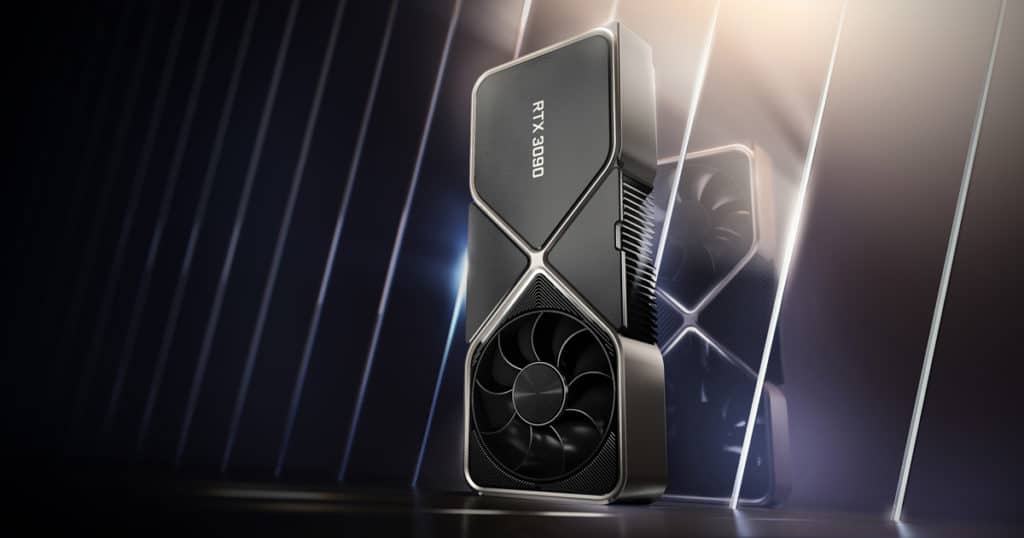
Realistically though, this is kind of like comparing a brand new apple with a dependable orange – AMD can bank on the performance of the 7nm node because they know exactly how to squeeze all of the power from a node that size, whereas Nvidia is looking to expand their horizons with new tech. On paper, there isn’t that much difference and it shouldn’t sway your choice too much.
We can also talk about performance per watt and power requirements if you like – cards at this price point are definitely going to be greedy when it comes to power…or so you would think.
In reality, the 6900XT will only require 300W of power running to it for optimal performance, and even then AMD has been very vocal about how RDNA2 and the whole of the Big Navi generation has been created with a focus on pushing the performance per watt of each of the cards featured in the range – in fact, within the 6900Xt, you can expect a 65 percent increase in the performance-per-watt compared to that seen in previous generation RDNA cards – which is pretty amazing.
On the other hand, though, you have the RTX 3090, which is a little needier when it comes to power. In fact, it needs 350W for a steady power supply, and even then there are plenty of reports of this card being quite thirsty when it comes to its general running, with some users reporting that its performance-per-watt can vary greatly depending on the actual tasking of the graphics card itself. If we are talking actual benchmarks, then the 3090 lies at the top of the most power-hungry graphics cards on the market today, delivering .25FPS per watt but also needing the most juice to keep running.
Now, there is one area when it comes to posted specifications where we can pick a clear winner out of these two cards – and that’s the size of them. It’s no secret that the BFGPU, the 3090 is the larger of the two cards, with the card demanding triple slot capabilities and measuring out at 310mm – not small by any stretch, and it could cause a problem for those looking to build a gaming PC in smaller cases.
The Radeon RX 6900XT on the other hand is no bigger than its less powerful 6800 XT relative, 267mm long with a triple-slot cooling solution – so noticeable smaller. That surface area translates to a less noticeable noise level and temperature in the 6900 XT as well – with a 10% lower fan noise, and a 4% lower maximum recording temperature. So, if those factors are important to you, you now know that the 6900 XT isn’t just the smaller card, but the one that stays cooler.
When it comes to judging these two graphics cards though, we really do have to look at them as a sum of their parts, rather than examining each individual component. So, for that, let’s look at the performance of the Radeon RX 6900XT versus the GeForce RTX 3090.
Radeon RX 6900XT Versus The GeForce RTX 3090 Performance
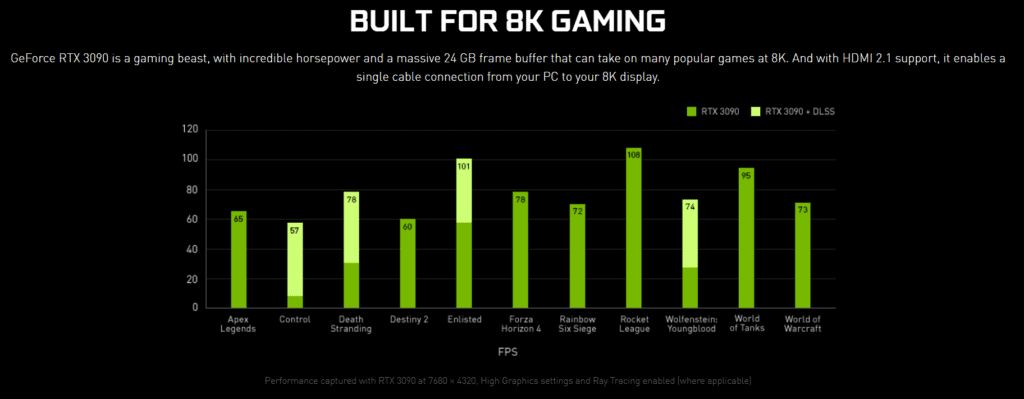
Graphics card performance usually means one thing: in-game performance. So, let’s start there and talk about what we know about how these cards perform in-game. Starting with the 3090, it’s no stretch to say that the card is definitely one of the most powerful consumer gaming GPUs to ever be released to the mass market.
You can expect the 3090 to consistently deliver 4K ray-traced environments, with one foot planted firmly in the future with the expectation being that as video game development progresses and games being made can take more advantage of the processes that the 3090 allows, the performance you see will only get better.
We could talk about the CUDA cores here, it seems like it’s worth nothing – especially when you realize that the 3090 has over double the number of what the RX 6900 XT is working with. Really though, this doesn’t mean much, for a true ‘which plays better’ we are always better off looking at the base clock speeds, frame rate comparisons, and of course the inbuilt VRAM memory. And we will.
But first, it’s worth saying that the RX 6900 XT will be capable of delivering the same kind of 4K, ray-traced environments that the 3090 will, and that is incredibly impressive. In fact, it’s time that we looked into some of those frame rate comparisons I mentioned just before.
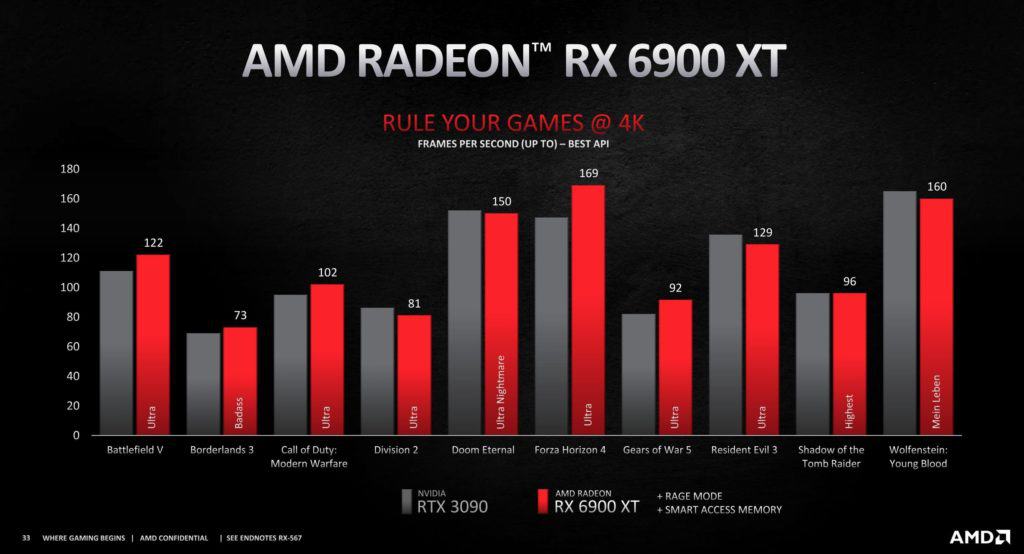
First things first: yes this is a manufacturer’s own benchmark test, but let’s assume that it’s marginally fair. So, without third party confirmed benchmarks, this is the best we have to go on for the 6900 XT when it comes to API (frame rate benchmarks) at the moment, and even the super skeptic in me is saying that between these two cards, the 6900 XT is incredibly impressive. Alright, so the 3090 is beating it out in some titles, but the 6900 XT holds its own, and in some cases, even flat out beats the 3090 – just look at Forza Horizon 4.
The reason I put this graph in is so that when I tell you that the 6900 XT can hold its own against the 24GB of GDDR6X RAM that comes in the 3090, you believe me. Now, that GDDR6X RAM is no slouch, it promises to be faster than GDDR6 even at launch, and because of the larger memory bus, you would think that the larger VRAM on the 3090 gives it an advantage over the 16GB of GDDR6 RAM present in the 6900 XT.
But that’s not the case. That’s because AMD has compensated for this difference in VRAM sizes by creating what it calls the ‘infinity cache’. AMD’s infinity cache will apparently allow a GPU to operate a near 2.20 percent greater bandwidth than you would expect with the 256-bit memory bus that comes with 6900 XT, meaning when all is said and done, the 6900 XT will have a memory bandwidth of 1664BGps, whereas the 3090 will have a memory bandwidth of 936BGps.
So, it looks like as far as memory and frames per second are concerned, the 6900 XT has it. It looks that way in the boost clock as well, with the 6900 XT having a boost clock of 2,250 MHz, and the 3090 has a boost clock of 1,695MMHz – which is kind of embarrassing for the 3090.
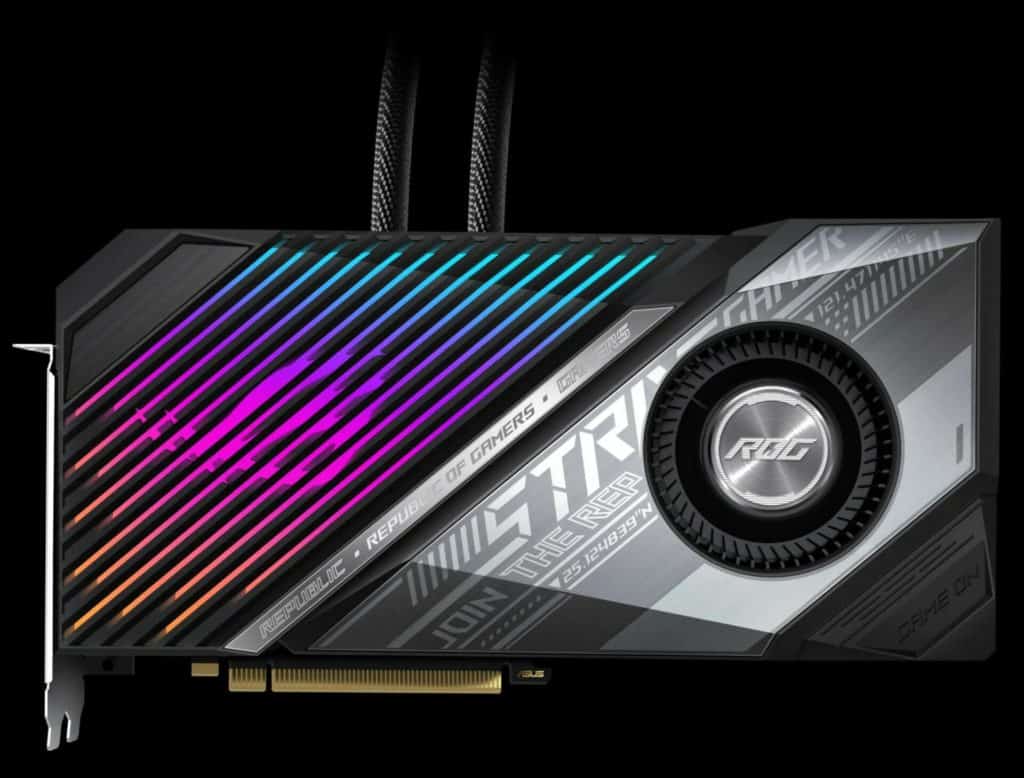
However, despite the 6900 XT’s apparent strengths in the gameplay department, don’t count the 3090 out entirely. The GPU will still be capable of providing all of that ultra-high-end gaming goodness that you would come to expect from a GPU at this price point, with the significant difference being that the 3090 is much better suited to other tasks outside of gaming as well.
Processes like video rendering, animation, and other 3D modeling are all much better handled by the 3090 itself, which adds a little more to the allure of the 3090. Sure, it can handle all of the in-game performance you might want, but after that, it can help you in other projects as well, where the 6900 XT might fall a little short.
So, for a bottom line on the question of an AMD Radeon 6900 XT versus an Nvidia GeForce RTX 3090 when it comes to flat-out performance the lines can be a little blurred, but it pans out like this. If you are interested in pure gaming performance, then the 6900 XT might be the way to go, but if you are looking to get a little more out of your graphics card, then you could be better served by the RTX 3090. However, both cards are going to perform amazingly in-game, so it will be hard to miss!
Manufacturer Differences Between The Radeon RX 6900XT And The GeForce RTX 3090
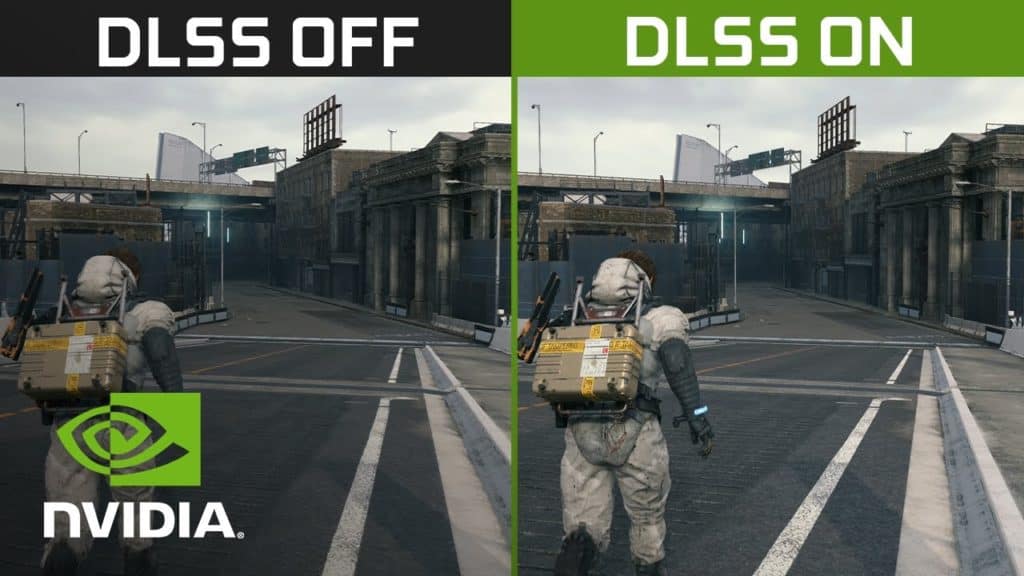
Titling this section ‘manufacturer differences’ might not be the most exciting, but I can assure you it does implicate a lot; let’s start by looking at what Nvidia has baked into their RTX 3090, and why it’s important.
Firstly, we have the DLSS deep learning technology. Simply put, this is an AI tech that Nvidia has been promising will deliver a more complete and faster loading process when it comes to in-game rendering. Essentially, instead of relying on game files to load instantly, the 3090’s inbuilt DLSS will learn what the game should look like, and make automatic enhancements to improve the overall look of the title.
Its impressive stuff, especially when you learn that this will be alongside the tensor cores that Nvidia is so proud of, which will work alongside the DLSS systems to upscale lower resolution game renders to higher ones without losing image quality or viability. It’s all very impressive and can work well to make older games, or games not set for your preferred resolution run better alongside a 3090.
Then you have the GeForce experience app and all of the drivers that go along with it. Now, this might not be the thing to talk about when it comes to a straight toss-up between the 6900 XT and the RTX 3090, but it is worth mentioning that not only is Nvidia ahead when it comes to releasing quality drivers for the newest games that allow them to be played in their best state, but their GeForce experience app manages it all for the user – and it can even set optimal game settings for the user, making for an amazing in-game experience right from the start.
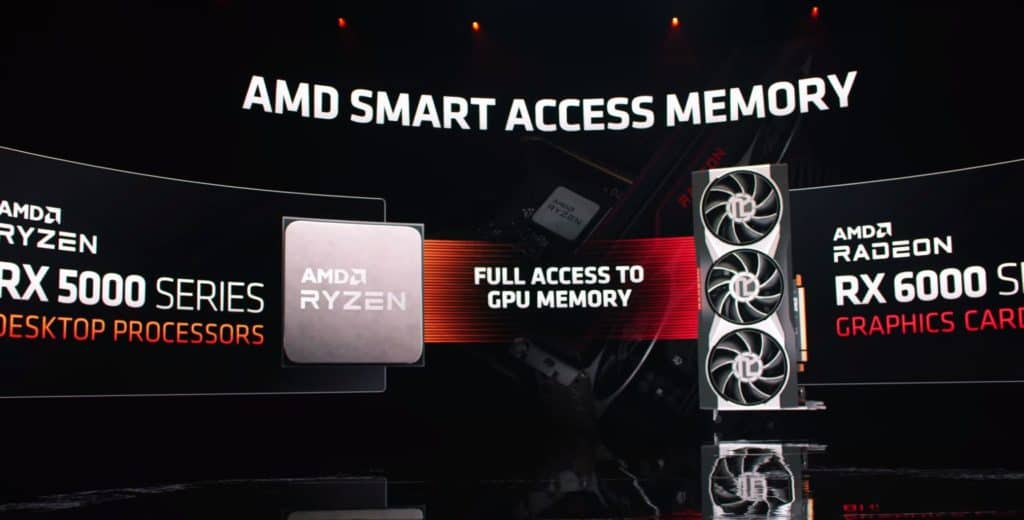
Then we have AMD. Truthfully, the list of actual visible features in comparison to Nvidia isn’t quite as long as you would hope – but that doesn’t mean team red is slacking.
So, first off you have that infinity cache I mentioned in the performance section, which boosts the ability of the memory bus itself beyond what you might expect. This is a theme AMD ran with because the 6000 series of GPUs also saw the introduction of AMD’s Smart Access Memory. What is Smart Access Memory? Well, AMD tells us that it’s a way of improving in-game performance by nearly twenty percent, all by removing constraints between the CPU and GPU, making for faster load times between the two components.
This is all done between the 6000 series GPUs and the 5000 series CPUs, so it does require an AMD CPU in your machine, but that really shouldn’t worry you as the new Zen 3 CPUs are actually incredible, and are already sitting happily on top of the list of the best CPUs for gaming (and everything else) available right now.
Ray tracing will be viable as well in the 6900 XT, which is great, and of course, they will have good drivers for games as they are released – but do remember that there was a time where the drivers from AMD were not amazing. Bear that in mind, but it could be much better in the future.
And then there is the fact that AMD doesn’t have anything like Nvidia’s DLSS to speak of. This means that upscaled resolutions won’t nearly be as impressive as they are on the 3090 and that Ray Tracing won’t be as impressive.
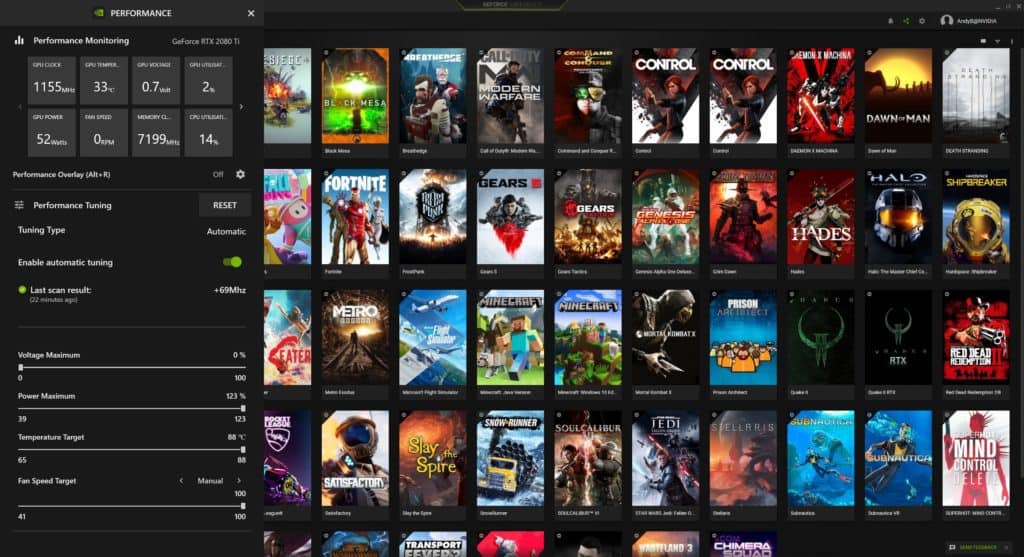
What I’m trying to say here is that the 3090 is going to do more for you in-game. It’s going to try and better any experience you have within any environment thanks to the DLSS, and it will perform better in other labor-intensive tasks thanks to its inbuilt tensor cores – so all in all, it will give you more for your money.
However, when it comes to pure in-game performance, AMD is doing a lot, prioritizing communication speed between components as well as factors like performance-per-watt to make sure that their card can keep up with the other ultra-high standard GPUs out there when it comes to gaming.
Radeon RX 6900XT Versus The GeForce RTX 3090: Pricing
Ok, here’s the section most people are going to pay most attention to, but I’ll keep it nice and short because let’s face it, there is a clear winner here: The AMD Radeon 6900 XT. It costs $999, and that’s not cheap for sure, but the Nvidia RTX 3090 costs $1,499.
That’s a difference of $500 dollars.
Let’s sum it up like this. With either of these cards, you are going to be getting ultra-high levels of gaming fidelity, with performance at levels enjoyed by serious gamers with deep pockets and a deeper love of gaming. It’s just that when you choose the AMD Radeon 6900 XT, you are getting it for $500 cheaper than Nvidia is asking for. Clearly, that’s a winner.
Now of course there are some caveats. You aren’t going to be getting features like DLSS, tensor cores, or any other Nvidia accouterments – but if you are looking for pure gaming power then the RX 6900 XT is definitely the best card for your money.
However.
If you are looking for a GPU that can do top tier, super-awesome, all the bells-and-whistles gameplay AND perform well in tasks like CAD design, animation, and rendering outside of gameplay, then the RTX 3090 is a solid contender, verging on professional status when it comes to its quality. If you are looking for a card that can do it all, that $500 gap is a lot easier to stomach.
So, there you go. For pure gaming performance versus pennies put down, choose the Radeon RX 6900 XT. For a card that can do it all and offer high-performance gaming, then you should choose the RTX 3090.
Radeon RX 6900XT Versus The GeForce RTX 3090: Our Verdict
There are still questions to be answered, and we are still waiting to find out more regarding the 6900 XT concerning third-party benchmarking scores and how it really holds up against impartial testing, but really, when it comes to choosing between these two cards, there are two very important questions you need to ask yourself that will help you make a definitive decision on which you want.
The first is are you interested in more than just gaming performance? For your money, the 6900 XT is definitely the better card for a pure gaming focussed PC, but if you are looking to do more and need a card that can keep up, then you should look at the Nvidia RTX 3090.
It’s that simple.
The second question? Which card is available. The issues with stocking these GPUs don’t look like they are going away soon – AMD has even warned us that the initial launch volumes of the 6900 XT series are disappointing, so if you are desperate to get into the elite tier of PC gaming and can’t wait a second more than you have to, just pick whichever of these cards appears first in retailers, and go for it.
You really can’t miss.
Got any more questions? Don’t worry, we can help. Just ask what you need to in the comments below and we will do our very best to try and come back with an answer that helps!
